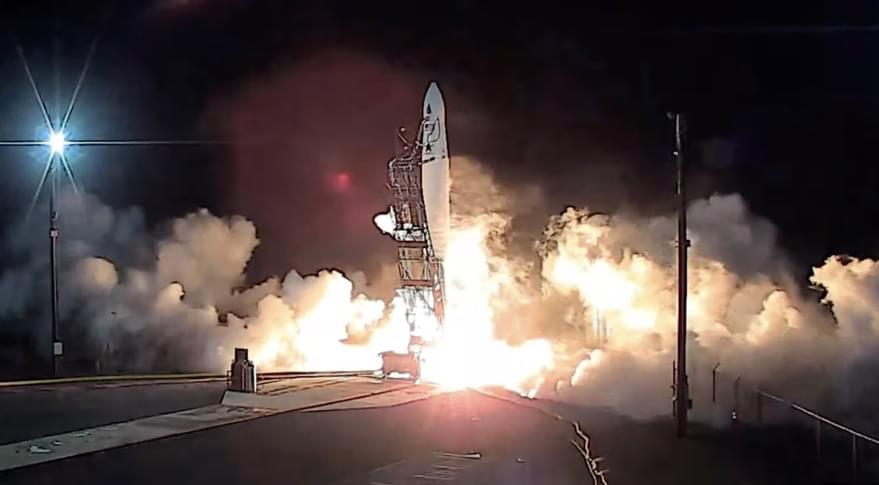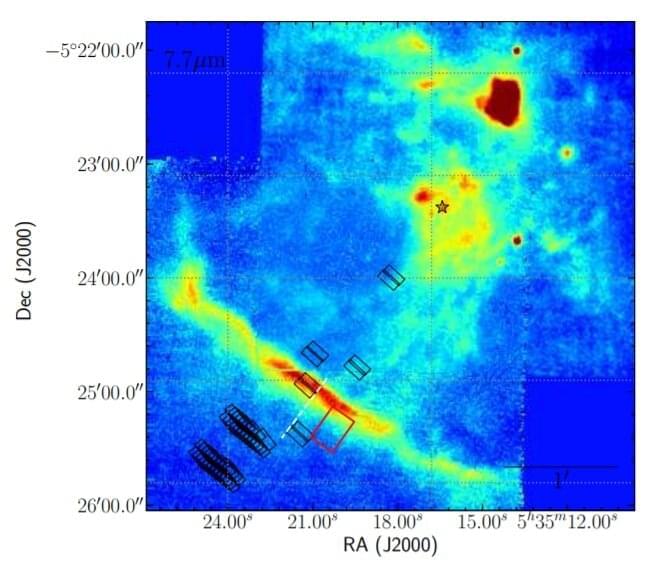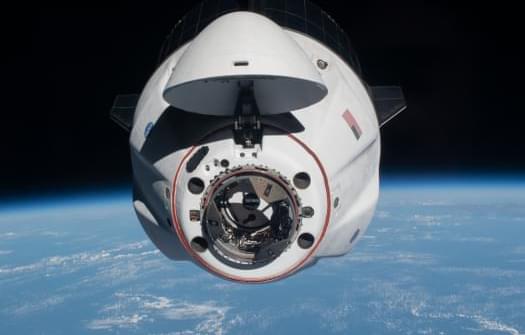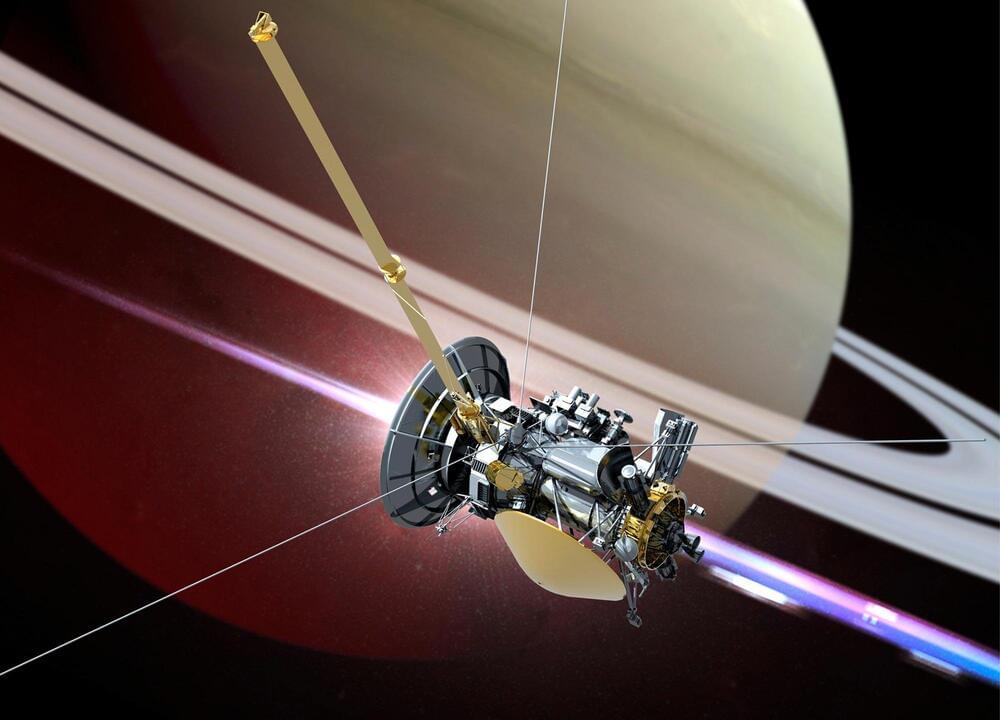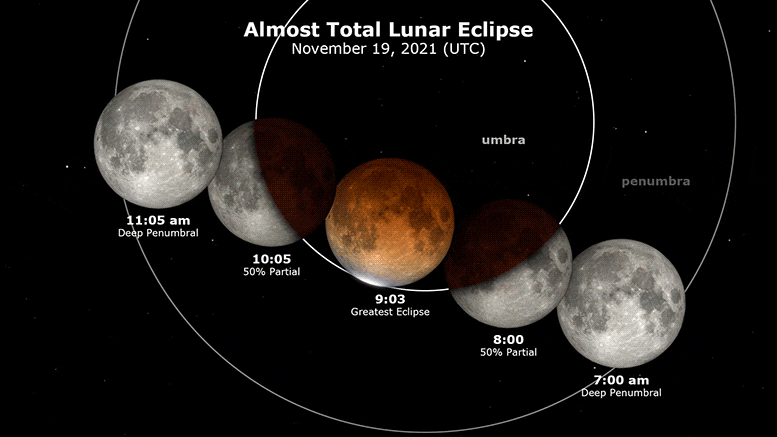The next full Moon is a near-total lunar eclipse, the Beaver, Frost/Frosty, or Snow Moon; Kartik Purnima, the full Moon of the Festivals of Karthika Deepam, Karthikai Vilakkidu, Thrikarthika, Loi Krathong, Bon Om Touk, and Tazaungdaing; and Ill (or Il) Poya.
The next full Moon will be early on Friday morning, November 19, 2021, appearing opposite the Sun (in Earth-based longitude) at 3:58 a.m. EST. While this will be on Friday for much of the Earth, it will be Thursday night from Alaska’s time zone westward to the International Date Line in the Pacific Ocean. The Moon will appear full for about three days around this time, from Wednesday night through Saturday morning.
This should be a good month for skywatching, with Venus.
